Brown Bullhead:
Other common names are catfish, mud cat and mud pout. The scientific name is Ictalurus nebulosus.
In Canada, the brown bullhead ranges from the Maritime Provinces to Manitoba. Introductions have been made in areas outside its natural range, e.g., British Columbia.
In Ontario, it ranges northward to a line between the Sault, Lake Nipissing and Mattawa. It was originally native to the eastern United States and the Mississippi Valley region but, by artificial propagation and distribution, it is now widely
distributed in nearly every state of the union.
Square tail.
The body is moderately long and is heaviest toward the head which is large and wide. The mouth is also large and wide, with eight barbels.
An adipose fin is present. Each of the dorsal, ventral and pectoral fins is provided with sharp spines.
The pectoral spines have long posterior serrations or barbs. Spines are useful as protection against enemies.
The fins are membranous, nearly uniformly coloured and seldom jet black.
The caudal fin is square or slightly emarginate.
The slippery, scaleless skin is olive to dark brown in colour, with dark mottlings on the sides, fading to white or cream on the flat belly.
Similar fish:
Channel Catfish.
Where it’s found:
- Throughout southern Ontario;
- Generally south of Highways 11 & 17 in the North.
Habitat:
- Slow, warmer waters.
- It is common in freshwater lakes, ponds and sluggish streams with mud bottom and with or without plant life.
Movements:
The brown bullhead travels in schools and uses its barbels or whiskers in searching out food. lts eyes are small, and visibility is therefore limited. Their nocturnal habits contribute to their protection.
The brown bullheads spawn in spring, April to June. Using their spiny tins, the male and female excavate a slight depression, eight inches to one foot wide in shallow water, about six inches deep, near aquatic weeds at the edge of a bank or under a log or stump. Often, the fish use the mouths of muskrat burrows or natural depressions.
The eggs, which are amber in colour, are produced in gelatinous masses, about three inches in diameter. Females 11 inches to 13 inches long produce 6,000 to 13,000 eggs.
Both parents guard the eggs during the incubation period which is about eight to ten days. When the baby fish are old enough to leave the nest, the parents accompany them, one remaining in the immediate vicinity and the other some distance away to watch for enemies. Guarding and herding the young increases their chances of survival.
Food and Feeding:
The brown bullhead is a bottom feeder. As noted previously, the long sensory barbels on the chin assist them in locating their food. Sensory organs are also located in the skin. In early summer, the brown bullhead feeds on aquatic insect larvae, and throughout the year on crayfish, molluscs, occasional fish and plant material. Their defensive apparatus, the spinous processes on the fins, are capable of inflicting painful wounds and, as a result, they enjoy at least partial immunity.
Although they are largely nocturnal in their feeding habits, they will feed in early morning and during the day, when it is cloudy. They do not feed during the spawning period but, if a baited hook is lowered into a spawning bed, they will take it, presumably to remove it for protection.
Size:
Length: 20-36 centimeters (8-14 inches).
The majority of bullheads weigh less than a pound but they provide a valuable recreation for the everyday fisherman and youngsters.
No elaborate equipment and no great amount of skill are necessary to catch them.
Other Local Fish Species
 https://hooklineandsinker.ca/wp-content/uploads/2020/09/Brandon-Upper-Grand-River-Brown-August-2019GGGG-scaled.jpg
1920
2560
HLSAdmin
https://hooklineandsinker.ca/wp-content/uploads/2014/12/Steelheading-in-the-Snow-900-80-Not-Faded-Actual-1030x91.jpg
HLSAdmin2020-09-18 22:35:402020-09-18 22:35:40Improving the quality of future fishing …
https://hooklineandsinker.ca/wp-content/uploads/2020/09/Brandon-Upper-Grand-River-Brown-August-2019GGGG-scaled.jpg
1920
2560
HLSAdmin
https://hooklineandsinker.ca/wp-content/uploads/2014/12/Steelheading-in-the-Snow-900-80-Not-Faded-Actual-1030x91.jpg
HLSAdmin2020-09-18 22:35:402020-09-18 22:35:40Improving the quality of future fishing … https://hooklineandsinker.ca/wp-content/uploads/2016/12/Ian-22-inch-Grand-River-Brown-Trout-CC.jpg
1662
2428
HLSAdmin
https://hooklineandsinker.ca/wp-content/uploads/2014/12/Steelheading-in-the-Snow-900-80-Not-Faded-Actual-1030x91.jpg
HLSAdmin2016-12-19 22:03:142020-08-01 20:58:50Ontario’s Upper Grand River Brown Trout Memories … SALMO TRUTTA
https://hooklineandsinker.ca/wp-content/uploads/2016/12/Ian-22-inch-Grand-River-Brown-Trout-CC.jpg
1662
2428
HLSAdmin
https://hooklineandsinker.ca/wp-content/uploads/2014/12/Steelheading-in-the-Snow-900-80-Not-Faded-Actual-1030x91.jpg
HLSAdmin2016-12-19 22:03:142020-08-01 20:58:50Ontario’s Upper Grand River Brown Trout Memories … SALMO TRUTTA https://hooklineandsinker.ca/wp-content/uploads/2016/12/Saugeen-River-Steelhead-October-21st-2016AAA.jpg
1646
2679
HLSAdmin
https://hooklineandsinker.ca/wp-content/uploads/2014/12/Steelheading-in-the-Snow-900-80-Not-Faded-Actual-1030x91.jpg
HLSAdmin2016-12-19 20:25:042017-01-29 19:44:44Ontario Steelhead Memories … ONCORHYNCHUS MYKISS … “The Gray Ghost”
https://hooklineandsinker.ca/wp-content/uploads/2016/12/Saugeen-River-Steelhead-October-21st-2016AAA.jpg
1646
2679
HLSAdmin
https://hooklineandsinker.ca/wp-content/uploads/2014/12/Steelheading-in-the-Snow-900-80-Not-Faded-Actual-1030x91.jpg
HLSAdmin2016-12-19 20:25:042017-01-29 19:44:44Ontario Steelhead Memories … ONCORHYNCHUS MYKISS … “The Gray Ghost” https://hooklineandsinker.ca/wp-content/uploads/2017/04/Fairy-Lake-Crayfish-March-2017AAA.jpg
2204
2012
HLSAdmin
https://hooklineandsinker.ca/wp-content/uploads/2014/12/Steelheading-in-the-Snow-900-80-Not-Faded-Actual-1030x91.jpg
HLSAdmin2017-04-02 20:11:562019-08-11 20:10:37Crayfish
https://hooklineandsinker.ca/wp-content/uploads/2017/04/Fairy-Lake-Crayfish-March-2017AAA.jpg
2204
2012
HLSAdmin
https://hooklineandsinker.ca/wp-content/uploads/2014/12/Steelheading-in-the-Snow-900-80-Not-Faded-Actual-1030x91.jpg
HLSAdmin2017-04-02 20:11:562019-08-11 20:10:37Crayfish https://hooklineandsinker.ca/wp-content/uploads/2014/11/Guelph-Lake-Largemouth-Bass-Ultra-Tungsten-12-ounce-Spinnerbait-AAA.jpg
2137
2078
Ray Collesso
https://hooklineandsinker.ca/wp-content/uploads/2014/12/Steelheading-in-the-Snow-900-80-Not-Faded-Actual-1030x91.jpg
Ray Collesso2014-11-24 19:24:012017-04-06 10:40:37Largemouth Bass
https://hooklineandsinker.ca/wp-content/uploads/2014/11/Guelph-Lake-Largemouth-Bass-Ultra-Tungsten-12-ounce-Spinnerbait-AAA.jpg
2137
2078
Ray Collesso
https://hooklineandsinker.ca/wp-content/uploads/2014/12/Steelheading-in-the-Snow-900-80-Not-Faded-Actual-1030x91.jpg
Ray Collesso2014-11-24 19:24:012017-04-06 10:40:37Largemouth Bass https://hooklineandsinker.ca/wp-content/uploads/2015/01/Guelph-Lake-Rock-Bass-AAA.jpg
706
934
HLSAdmin
https://hooklineandsinker.ca/wp-content/uploads/2014/12/Steelheading-in-the-Snow-900-80-Not-Faded-Actual-1030x91.jpg
HLSAdmin2015-01-01 21:22:012019-08-10 23:03:54Rock Bass
https://hooklineandsinker.ca/wp-content/uploads/2015/01/Guelph-Lake-Rock-Bass-AAA.jpg
706
934
HLSAdmin
https://hooklineandsinker.ca/wp-content/uploads/2014/12/Steelheading-in-the-Snow-900-80-Not-Faded-Actual-1030x91.jpg
HLSAdmin2015-01-01 21:22:012019-08-10 23:03:54Rock Bass https://hooklineandsinker.ca/wp-content/uploads/2016/07/Steve-Silver-Bass-Hamilton-AAA.jpg
1752
2336
HLSAdmin
https://hooklineandsinker.ca/wp-content/uploads/2014/12/Steelheading-in-the-Snow-900-80-Not-Faded-Actual-1030x91.jpg
HLSAdmin2016-07-13 17:07:482018-09-26 21:55:44Silver Bass or White Bass
https://hooklineandsinker.ca/wp-content/uploads/2016/07/Steve-Silver-Bass-Hamilton-AAA.jpg
1752
2336
HLSAdmin
https://hooklineandsinker.ca/wp-content/uploads/2014/12/Steelheading-in-the-Snow-900-80-Not-Faded-Actual-1030x91.jpg
HLSAdmin2016-07-13 17:07:482018-09-26 21:55:44Silver Bass or White Bass https://hooklineandsinker.ca/wp-content/uploads/2014/01/Grand-River-Streamer-Smallmouth-Bass-300x225.jpg
225
300
Ray Collesso
https://hooklineandsinker.ca/wp-content/uploads/2014/12/Steelheading-in-the-Snow-900-80-Not-Faded-Actual-1030x91.jpg
Ray Collesso2014-11-24 19:28:592019-08-11 21:15:14Smallmouth Bass
https://hooklineandsinker.ca/wp-content/uploads/2014/01/Grand-River-Streamer-Smallmouth-Bass-300x225.jpg
225
300
Ray Collesso
https://hooklineandsinker.ca/wp-content/uploads/2014/12/Steelheading-in-the-Snow-900-80-Not-Faded-Actual-1030x91.jpg
Ray Collesso2014-11-24 19:28:592019-08-11 21:15:14Smallmouth Bass https://hooklineandsinker.ca/wp-content/uploads/2014/11/bluegill-2.jpg
1270
2040
Ray Collesso
https://hooklineandsinker.ca/wp-content/uploads/2014/12/Steelheading-in-the-Snow-900-80-Not-Faded-Actual-1030x91.jpg
Ray Collesso2014-11-24 19:11:332017-04-06 10:43:45Bluegill
https://hooklineandsinker.ca/wp-content/uploads/2014/11/bluegill-2.jpg
1270
2040
Ray Collesso
https://hooklineandsinker.ca/wp-content/uploads/2014/12/Steelheading-in-the-Snow-900-80-Not-Faded-Actual-1030x91.jpg
Ray Collesso2014-11-24 19:11:332017-04-06 10:43:45Bluegill https://hooklineandsinker.ca/wp-content/uploads/2018/07/Matt-Bowfin-CCC.jpg
2305
2420
HLSAdmin
https://hooklineandsinker.ca/wp-content/uploads/2014/12/Steelheading-in-the-Snow-900-80-Not-Faded-Actual-1030x91.jpg
HLSAdmin2018-07-25 22:25:182020-07-20 20:47:45Bowfin or Dogfish
https://hooklineandsinker.ca/wp-content/uploads/2018/07/Matt-Bowfin-CCC.jpg
2305
2420
HLSAdmin
https://hooklineandsinker.ca/wp-content/uploads/2014/12/Steelheading-in-the-Snow-900-80-Not-Faded-Actual-1030x91.jpg
HLSAdmin2018-07-25 22:25:182020-07-20 20:47:45Bowfin or Dogfish https://hooklineandsinker.ca/wp-content/uploads/2015/06/Guelph-Lake-Bulhead-Catfish-AAA.jpg
1913
1751
HLSAdmin
https://hooklineandsinker.ca/wp-content/uploads/2014/12/Steelheading-in-the-Snow-900-80-Not-Faded-Actual-1030x91.jpg
HLSAdmin2015-06-02 22:56:082017-08-29 18:32:24Brown Bullhead
https://hooklineandsinker.ca/wp-content/uploads/2015/06/Guelph-Lake-Bulhead-Catfish-AAA.jpg
1913
1751
HLSAdmin
https://hooklineandsinker.ca/wp-content/uploads/2014/12/Steelheading-in-the-Snow-900-80-Not-Faded-Actual-1030x91.jpg
HLSAdmin2015-06-02 22:56:082017-08-29 18:32:24Brown Bullhead https://hooklineandsinker.ca/wp-content/uploads/2015/01/Burbot-or-Ling-Ice-Fishing-AAAA-scaled.jpg
1731
2560
HLSAdmin
https://hooklineandsinker.ca/wp-content/uploads/2014/12/Steelheading-in-the-Snow-900-80-Not-Faded-Actual-1030x91.jpg
HLSAdmin2015-01-01 21:37:552021-03-07 00:21:04Burbot or Ling
https://hooklineandsinker.ca/wp-content/uploads/2015/01/Burbot-or-Ling-Ice-Fishing-AAAA-scaled.jpg
1731
2560
HLSAdmin
https://hooklineandsinker.ca/wp-content/uploads/2014/12/Steelheading-in-the-Snow-900-80-Not-Faded-Actual-1030x91.jpg
HLSAdmin2015-01-01 21:37:552021-03-07 00:21:04Burbot or Ling https://hooklineandsinker.ca/wp-content/uploads/2014/01/Carp-on-the-Fly-Rod-Thames-River-HH.jpg
1891
3087
HLSAdmin
https://hooklineandsinker.ca/wp-content/uploads/2014/12/Steelheading-in-the-Snow-900-80-Not-Faded-Actual-1030x91.jpg
HLSAdmin2015-01-01 21:04:412020-07-20 19:40:40Common Carp
https://hooklineandsinker.ca/wp-content/uploads/2014/01/Carp-on-the-Fly-Rod-Thames-River-HH.jpg
1891
3087
HLSAdmin
https://hooklineandsinker.ca/wp-content/uploads/2014/12/Steelheading-in-the-Snow-900-80-Not-Faded-Actual-1030x91.jpg
HLSAdmin2015-01-01 21:04:412020-07-20 19:40:40Common Carp https://hooklineandsinker.ca/wp-content/uploads/2014/10/Catfish-Rapala-Centerpin-Float-Reel-AA.jpg
2325
1836
Ray Collesso
https://hooklineandsinker.ca/wp-content/uploads/2014/12/Steelheading-in-the-Snow-900-80-Not-Faded-Actual-1030x91.jpg
Ray Collesso2014-11-24 19:20:532017-04-06 10:46:03Channel Catfish
https://hooklineandsinker.ca/wp-content/uploads/2014/10/Catfish-Rapala-Centerpin-Float-Reel-AA.jpg
2325
1836
Ray Collesso
https://hooklineandsinker.ca/wp-content/uploads/2014/12/Steelheading-in-the-Snow-900-80-Not-Faded-Actual-1030x91.jpg
Ray Collesso2014-11-24 19:20:532017-04-06 10:46:03Channel Catfish https://hooklineandsinker.ca/wp-content/uploads/2015/04/Creek-Chub1.jpg
874
2048
HLSAdmin
https://hooklineandsinker.ca/wp-content/uploads/2014/12/Steelheading-in-the-Snow-900-80-Not-Faded-Actual-1030x91.jpg
HLSAdmin2015-04-05 19:28:012020-06-11 20:48:54Creek Chub
https://hooklineandsinker.ca/wp-content/uploads/2015/04/Creek-Chub1.jpg
874
2048
HLSAdmin
https://hooklineandsinker.ca/wp-content/uploads/2014/12/Steelheading-in-the-Snow-900-80-Not-Faded-Actual-1030x91.jpg
HLSAdmin2015-04-05 19:28:012020-06-11 20:48:54Creek Chub https://hooklineandsinker.ca/wp-content/uploads/2015/05/Upper-Grand-River-Horny-Creek-Chub-AAA.jpg
2617
2386
HLSAdmin
https://hooklineandsinker.ca/wp-content/uploads/2014/12/Steelheading-in-the-Snow-900-80-Not-Faded-Actual-1030x91.jpg
HLSAdmin2015-05-26 23:09:332020-06-11 20:45:34River and Hornyhead Chub
https://hooklineandsinker.ca/wp-content/uploads/2015/05/Upper-Grand-River-Horny-Creek-Chub-AAA.jpg
2617
2386
HLSAdmin
https://hooklineandsinker.ca/wp-content/uploads/2014/12/Steelheading-in-the-Snow-900-80-Not-Faded-Actual-1030x91.jpg
HLSAdmin2015-05-26 23:09:332020-06-11 20:45:34River and Hornyhead Chub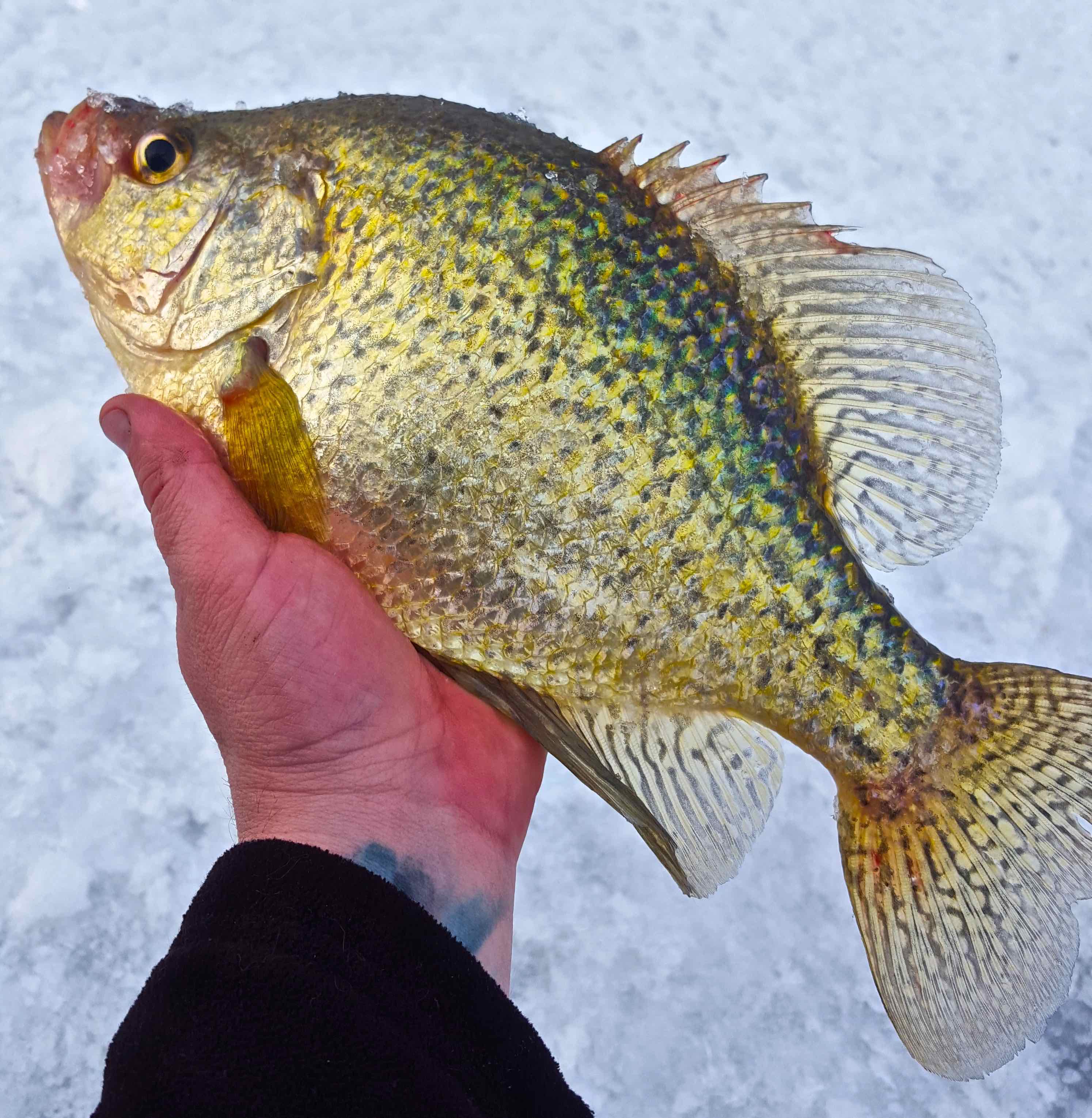 https://hooklineandsinker.ca/wp-content/uploads/2014/11/Crappie-through-the-Ice-Guelph-Lake-AAA.jpg
3059
2988
Ray Collesso
https://hooklineandsinker.ca/wp-content/uploads/2014/12/Steelheading-in-the-Snow-900-80-Not-Faded-Actual-1030x91.jpg
Ray Collesso2014-11-24 19:07:442020-03-03 21:13:12Black Crappie
https://hooklineandsinker.ca/wp-content/uploads/2014/11/Crappie-through-the-Ice-Guelph-Lake-AAA.jpg
3059
2988
Ray Collesso
https://hooklineandsinker.ca/wp-content/uploads/2014/12/Steelheading-in-the-Snow-900-80-Not-Faded-Actual-1030x91.jpg
Ray Collesso2014-11-24 19:07:442020-03-03 21:13:12Black Crappie https://hooklineandsinker.ca/wp-content/uploads/2015/01/Steve-Freshwater-Sheephead-Drum-Hamilton-DDD.jpg
1628
2043
HLSAdmin
https://hooklineandsinker.ca/wp-content/uploads/2014/12/Steelheading-in-the-Snow-900-80-Not-Faded-Actual-1030x91.jpg
HLSAdmin2015-01-01 20:59:002018-01-14 22:12:29Freshwater Drum or Sheephead
https://hooklineandsinker.ca/wp-content/uploads/2015/01/Steve-Freshwater-Sheephead-Drum-Hamilton-DDD.jpg
1628
2043
HLSAdmin
https://hooklineandsinker.ca/wp-content/uploads/2014/12/Steelheading-in-the-Snow-900-80-Not-Faded-Actual-1030x91.jpg
HLSAdmin2015-01-01 20:59:002018-01-14 22:12:29Freshwater Drum or Sheephead https://hooklineandsinker.ca/wp-content/uploads/2016/05/Mooneye-Fishing-on-the-Lower-Grand-Rver-BBB.jpg
853
1280
HLSAdmin
https://hooklineandsinker.ca/wp-content/uploads/2014/12/Steelheading-in-the-Snow-900-80-Not-Faded-Actual-1030x91.jpg
HLSAdmin2016-05-14 20:18:122017-04-06 10:57:24Mooneye
https://hooklineandsinker.ca/wp-content/uploads/2016/05/Mooneye-Fishing-on-the-Lower-Grand-Rver-BBB.jpg
853
1280
HLSAdmin
https://hooklineandsinker.ca/wp-content/uploads/2014/12/Steelheading-in-the-Snow-900-80-Not-Faded-Actual-1030x91.jpg
HLSAdmin2016-05-14 20:18:122017-04-06 10:57:24Mooneye https://hooklineandsinker.ca/wp-content/uploads/2015/01/Saugeen-River-Musky-A.jpg
2087
3265
HLSAdmin
https://hooklineandsinker.ca/wp-content/uploads/2014/12/Steelheading-in-the-Snow-900-80-Not-Faded-Actual-1030x91.jpg
HLSAdmin2015-01-01 21:43:512017-06-17 19:48:44Muskellunge (Musky / Muskie)
https://hooklineandsinker.ca/wp-content/uploads/2015/01/Saugeen-River-Musky-A.jpg
2087
3265
HLSAdmin
https://hooklineandsinker.ca/wp-content/uploads/2014/12/Steelheading-in-the-Snow-900-80-Not-Faded-Actual-1030x91.jpg
HLSAdmin2015-01-01 21:43:512017-06-17 19:48:44Muskellunge (Musky / Muskie) https://hooklineandsinker.ca/wp-content/uploads/2014/11/Perch-Guelph-Lake-Ice-Fishing-A.jpg
1096
2448
Ray Collesso
https://hooklineandsinker.ca/wp-content/uploads/2014/12/Steelheading-in-the-Snow-900-80-Not-Faded-Actual-1030x91.jpg
Ray Collesso2014-11-30 21:57:452017-04-06 11:00:20Yellow Perch (“Jumbo” Perch)
https://hooklineandsinker.ca/wp-content/uploads/2014/11/Perch-Guelph-Lake-Ice-Fishing-A.jpg
1096
2448
Ray Collesso
https://hooklineandsinker.ca/wp-content/uploads/2014/12/Steelheading-in-the-Snow-900-80-Not-Faded-Actual-1030x91.jpg
Ray Collesso2014-11-30 21:57:452017-04-06 11:00:20Yellow Perch (“Jumbo” Perch) https://hooklineandsinker.ca/wp-content/uploads/2015/04/Longnose-Gar-Pike-Kawarthas-A.jpg
218
606
HLSAdmin
https://hooklineandsinker.ca/wp-content/uploads/2014/12/Steelheading-in-the-Snow-900-80-Not-Faded-Actual-1030x91.jpg
HLSAdmin2015-04-05 21:57:362019-07-27 20:48:24Longnose Gar Pike
https://hooklineandsinker.ca/wp-content/uploads/2015/04/Longnose-Gar-Pike-Kawarthas-A.jpg
218
606
HLSAdmin
https://hooklineandsinker.ca/wp-content/uploads/2014/12/Steelheading-in-the-Snow-900-80-Not-Faded-Actual-1030x91.jpg
HLSAdmin2015-04-05 21:57:362019-07-27 20:48:24Longnose Gar Pike https://hooklineandsinker.ca/wp-content/uploads/2014/10/Northern-Pike-Chartreuse-Trout-Bead-Okuma-Raw-Float-Reel-Resized.jpg
740
840
Ray Collesso
https://hooklineandsinker.ca/wp-content/uploads/2014/12/Steelheading-in-the-Snow-900-80-Not-Faded-Actual-1030x91.jpg
Ray Collesso2014-11-24 19:35:422017-04-06 11:07:27Northern Pike
https://hooklineandsinker.ca/wp-content/uploads/2014/10/Northern-Pike-Chartreuse-Trout-Bead-Okuma-Raw-Float-Reel-Resized.jpg
740
840
Ray Collesso
https://hooklineandsinker.ca/wp-content/uploads/2014/12/Steelheading-in-the-Snow-900-80-Not-Faded-Actual-1030x91.jpg
Ray Collesso2014-11-24 19:35:422017-04-06 11:07:27Northern Pike https://hooklineandsinker.ca/wp-content/uploads/2015/03/Upper-Grand-River-Walleye-on-a-Bead-Head-Nymph-AA.jpg
2684
4575
Ray Collesso
https://hooklineandsinker.ca/wp-content/uploads/2014/12/Steelheading-in-the-Snow-900-80-Not-Faded-Actual-1030x91.jpg
Ray Collesso2014-11-24 19:33:332018-09-15 20:32:28Pickerel or Walleye
https://hooklineandsinker.ca/wp-content/uploads/2015/03/Upper-Grand-River-Walleye-on-a-Bead-Head-Nymph-AA.jpg
2684
4575
Ray Collesso
https://hooklineandsinker.ca/wp-content/uploads/2014/12/Steelheading-in-the-Snow-900-80-Not-Faded-Actual-1030x91.jpg
Ray Collesso2014-11-24 19:33:332018-09-15 20:32:28Pickerel or Walleye https://hooklineandsinker.ca/wp-content/uploads/2015/04/Jim-Boni-Atlantic-Salmon-Petite-Cascapedia-22lbs-AAA.13.jpg
1201
2838
HLSAdmin
https://hooklineandsinker.ca/wp-content/uploads/2014/12/Steelheading-in-the-Snow-900-80-Not-Faded-Actual-1030x91.jpg
HLSAdmin2015-04-27 22:53:112019-07-24 20:59:48Atlantic Salmon
https://hooklineandsinker.ca/wp-content/uploads/2015/04/Jim-Boni-Atlantic-Salmon-Petite-Cascapedia-22lbs-AAA.13.jpg
1201
2838
HLSAdmin
https://hooklineandsinker.ca/wp-content/uploads/2014/12/Steelheading-in-the-Snow-900-80-Not-Faded-Actual-1030x91.jpg
HLSAdmin2015-04-27 22:53:112019-07-24 20:59:48Atlantic Salmon https://hooklineandsinker.ca/wp-content/uploads/2015/03/Early-Lake-Huron-Chinook-Salmon-on-the-Centerpin-Float-Rod-AAA.jpg
1851
3005
HLSAdmin
https://hooklineandsinker.ca/wp-content/uploads/2014/12/Steelheading-in-the-Snow-900-80-Not-Faded-Actual-1030x91.jpg
HLSAdmin2015-03-30 22:01:062017-10-27 17:01:28Chinook Salmon ( King Salmon )
https://hooklineandsinker.ca/wp-content/uploads/2015/03/Early-Lake-Huron-Chinook-Salmon-on-the-Centerpin-Float-Rod-AAA.jpg
1851
3005
HLSAdmin
https://hooklineandsinker.ca/wp-content/uploads/2014/12/Steelheading-in-the-Snow-900-80-Not-Faded-Actual-1030x91.jpg
HLSAdmin2015-03-30 22:01:062017-10-27 17:01:28Chinook Salmon ( King Salmon ) https://hooklineandsinker.ca/wp-content/uploads/2015/03/Coho-Salmon-Lamson-Fly-Reel.jpg
600
800
HLSAdmin
https://hooklineandsinker.ca/wp-content/uploads/2014/12/Steelheading-in-the-Snow-900-80-Not-Faded-Actual-1030x91.jpg
HLSAdmin2015-03-30 22:23:182019-02-02 23:17:57Coho Salmon
https://hooklineandsinker.ca/wp-content/uploads/2015/03/Coho-Salmon-Lamson-Fly-Reel.jpg
600
800
HLSAdmin
https://hooklineandsinker.ca/wp-content/uploads/2014/12/Steelheading-in-the-Snow-900-80-Not-Faded-Actual-1030x91.jpg
HLSAdmin2015-03-30 22:23:182019-02-02 23:17:57Coho Salmon https://hooklineandsinker.ca/wp-content/uploads/2015/07/Common-Shiner-AA.jpg
2776
1328
HLSAdmin
https://hooklineandsinker.ca/wp-content/uploads/2014/12/Steelheading-in-the-Snow-900-80-Not-Faded-Actual-1030x91.jpg
HLSAdmin2015-07-09 22:02:292017-04-06 11:22:41Common Shiner
https://hooklineandsinker.ca/wp-content/uploads/2015/07/Common-Shiner-AA.jpg
2776
1328
HLSAdmin
https://hooklineandsinker.ca/wp-content/uploads/2014/12/Steelheading-in-the-Snow-900-80-Not-Faded-Actual-1030x91.jpg
HLSAdmin2015-07-09 22:02:292017-04-06 11:22:41Common Shiner https://hooklineandsinker.ca/wp-content/uploads/2014/09/Steelhead-HLS-UV-Nuclear-Chartreuse-Beads-Slider-AA.jpg
863
2448
Ray Collesso
https://hooklineandsinker.ca/wp-content/uploads/2014/12/Steelheading-in-the-Snow-900-80-Not-Faded-Actual-1030x91.jpg
Ray Collesso2014-11-26 17:23:152017-04-06 11:25:03Steelhead
https://hooklineandsinker.ca/wp-content/uploads/2014/09/Steelhead-HLS-UV-Nuclear-Chartreuse-Beads-Slider-AA.jpg
863
2448
Ray Collesso
https://hooklineandsinker.ca/wp-content/uploads/2014/12/Steelheading-in-the-Snow-900-80-Not-Faded-Actual-1030x91.jpg
Ray Collesso2014-11-26 17:23:152017-04-06 11:25:03Steelhead https://hooklineandsinker.ca/wp-content/uploads/2015/02/Sucker-Float-Centerpin-Fishing-Mad-River-Bead-Raven-Fixed-Float-BB.jpg
1966
1124
HLSAdmin
https://hooklineandsinker.ca/wp-content/uploads/2014/12/Steelheading-in-the-Snow-900-80-Not-Faded-Actual-1030x91.jpg
HLSAdmin2015-01-07 20:24:502020-03-22 00:01:31White Sucker
https://hooklineandsinker.ca/wp-content/uploads/2015/02/Sucker-Float-Centerpin-Fishing-Mad-River-Bead-Raven-Fixed-Float-BB.jpg
1966
1124
HLSAdmin
https://hooklineandsinker.ca/wp-content/uploads/2014/12/Steelheading-in-the-Snow-900-80-Not-Faded-Actual-1030x91.jpg
HLSAdmin2015-01-07 20:24:502020-03-22 00:01:31White Sucker https://hooklineandsinker.ca/wp-content/uploads/2015/01/Sunfish-and-a-Berkley-Pink-Worm.jpg
1024
1024
HLSAdmin
https://hooklineandsinker.ca/wp-content/uploads/2014/12/Steelheading-in-the-Snow-900-80-Not-Faded-Actual-1030x91.jpg
HLSAdmin2015-01-01 21:16:402020-07-20 19:39:29Sunfish
https://hooklineandsinker.ca/wp-content/uploads/2015/01/Sunfish-and-a-Berkley-Pink-Worm.jpg
1024
1024
HLSAdmin
https://hooklineandsinker.ca/wp-content/uploads/2014/12/Steelheading-in-the-Snow-900-80-Not-Faded-Actual-1030x91.jpg
HLSAdmin2015-01-01 21:16:402020-07-20 19:39:29Sunfish https://hooklineandsinker.ca/wp-content/uploads/2014/01/Waterworks-Lamson-Force-Grand-River-Second-Year-Brown-Trout-AA.jpg
1220
2310
HLSAdmin
https://hooklineandsinker.ca/wp-content/uploads/2014/12/Steelheading-in-the-Snow-900-80-Not-Faded-Actual-1030x91.jpg
HLSAdmin2015-03-14 20:47:112019-01-01 14:55:32Brown Trout
https://hooklineandsinker.ca/wp-content/uploads/2014/01/Waterworks-Lamson-Force-Grand-River-Second-Year-Brown-Trout-AA.jpg
1220
2310
HLSAdmin
https://hooklineandsinker.ca/wp-content/uploads/2014/12/Steelheading-in-the-Snow-900-80-Not-Faded-Actual-1030x91.jpg
HLSAdmin2015-03-14 20:47:112019-01-01 14:55:32Brown Trout https://hooklineandsinker.ca/wp-content/uploads/2014/11/Lake-Trout-Ice-Fishing-B-Resized-for-Web.jpg
1356
1680
Ray Collesso
https://hooklineandsinker.ca/wp-content/uploads/2014/12/Steelheading-in-the-Snow-900-80-Not-Faded-Actual-1030x91.jpg
Ray Collesso2014-11-24 20:03:302018-09-08 20:46:29Lake Trout
https://hooklineandsinker.ca/wp-content/uploads/2014/11/Lake-Trout-Ice-Fishing-B-Resized-for-Web.jpg
1356
1680
Ray Collesso
https://hooklineandsinker.ca/wp-content/uploads/2014/12/Steelheading-in-the-Snow-900-80-Not-Faded-Actual-1030x91.jpg
Ray Collesso2014-11-24 20:03:302018-09-08 20:46:29Lake Trout https://hooklineandsinker.ca/wp-content/uploads/2014/11/Resident-Upper-Saugeen-Rainbow-Trout-BB.jpg
3264
2448
Ray Collesso
https://hooklineandsinker.ca/wp-content/uploads/2014/12/Steelheading-in-the-Snow-900-80-Not-Faded-Actual-1030x91.jpg
Ray Collesso2014-11-24 19:38:332017-04-06 11:39:12Rainbow Trout – Resident
https://hooklineandsinker.ca/wp-content/uploads/2014/11/Resident-Upper-Saugeen-Rainbow-Trout-BB.jpg
3264
2448
Ray Collesso
https://hooklineandsinker.ca/wp-content/uploads/2014/12/Steelheading-in-the-Snow-900-80-Not-Faded-Actual-1030x91.jpg
Ray Collesso2014-11-24 19:38:332017-04-06 11:39:12Rainbow Trout – Resident https://hooklineandsinker.ca/wp-content/uploads/2014/11/Brook-Speckled-Trout-Erin-Ontario-CC.jpg
1435
1192
Ray Collesso
https://hooklineandsinker.ca/wp-content/uploads/2014/12/Steelheading-in-the-Snow-900-80-Not-Faded-Actual-1030x91.jpg
Ray Collesso2014-11-24 20:00:372018-05-26 20:28:20Brook Trout or Speckled Trout
https://hooklineandsinker.ca/wp-content/uploads/2014/11/Brook-Speckled-Trout-Erin-Ontario-CC.jpg
1435
1192
Ray Collesso
https://hooklineandsinker.ca/wp-content/uploads/2014/12/Steelheading-in-the-Snow-900-80-Not-Faded-Actual-1030x91.jpg
Ray Collesso2014-11-24 20:00:372018-05-26 20:28:20Brook Trout or Speckled Trout https://hooklineandsinker.ca/wp-content/uploads/2015/01/White-Fish-Lake-Simcoe-Gold-Cotton-Cordell-CC-Spoon-Resized-for-Web.jpg
680
1212
HLSAdmin
https://hooklineandsinker.ca/wp-content/uploads/2014/12/Steelheading-in-the-Snow-900-80-Not-Faded-Actual-1030x91.jpg
HLSAdmin2015-01-07 20:30:282020-03-14 21:57:12Lake Whitefish
https://hooklineandsinker.ca/wp-content/uploads/2015/01/White-Fish-Lake-Simcoe-Gold-Cotton-Cordell-CC-Spoon-Resized-for-Web.jpg
680
1212
HLSAdmin
https://hooklineandsinker.ca/wp-content/uploads/2014/12/Steelheading-in-the-Snow-900-80-Not-Faded-Actual-1030x91.jpg
HLSAdmin2015-01-07 20:30:282020-03-14 21:57:12Lake WhitefishLocal Fishing Opportunities
 https://hooklineandsinker.ca/wp-content/uploads/2016/12/logging-the-miles.jpg
1883
3504
HLSAdmin
https://hooklineandsinker.ca/wp-content/uploads/2014/12/Steelheading-in-the-Snow-900-80-Not-Faded-Actual-1030x91.jpg
HLSAdmin2016-12-21 23:51:272020-12-27 19:50:18Located Somewhere Between Heaven and Perfect on your GPS …
https://hooklineandsinker.ca/wp-content/uploads/2016/12/logging-the-miles.jpg
1883
3504
HLSAdmin
https://hooklineandsinker.ca/wp-content/uploads/2014/12/Steelheading-in-the-Snow-900-80-Not-Faded-Actual-1030x91.jpg
HLSAdmin2016-12-21 23:51:272020-12-27 19:50:18Located Somewhere Between Heaven and Perfect on your GPS … https://hooklineandsinker.ca/wp-content/uploads/2015/03/Belwood-Lake-Conservation-Area-Gate-BB.jpg
1078
1805
HLSAdmin
https://hooklineandsinker.ca/wp-content/uploads/2014/12/Steelheading-in-the-Snow-900-80-Not-Faded-Actual-1030x91.jpg
HLSAdmin2015-03-19 19:29:142017-06-01 21:31:42Local – The Belwood Lake Conservation Area
https://hooklineandsinker.ca/wp-content/uploads/2015/03/Belwood-Lake-Conservation-Area-Gate-BB.jpg
1078
1805
HLSAdmin
https://hooklineandsinker.ca/wp-content/uploads/2014/12/Steelheading-in-the-Snow-900-80-Not-Faded-Actual-1030x91.jpg
HLSAdmin2015-03-19 19:29:142017-06-01 21:31:42Local – The Belwood Lake Conservation Area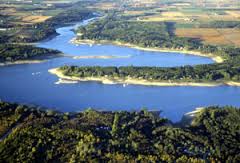 https://hooklineandsinker.ca/wp-content/uploads/2015/03/Conestogo-Lake-Conservation-Area.jpg
163
240
HLSAdmin
https://hooklineandsinker.ca/wp-content/uploads/2014/12/Steelheading-in-the-Snow-900-80-Not-Faded-Actual-1030x91.jpg
HLSAdmin2015-03-22 14:35:302017-02-19 22:20:10Local – The Conestogo Lake Conservation Area & The Conestogo River
https://hooklineandsinker.ca/wp-content/uploads/2015/03/Conestogo-Lake-Conservation-Area.jpg
163
240
HLSAdmin
https://hooklineandsinker.ca/wp-content/uploads/2014/12/Steelheading-in-the-Snow-900-80-Not-Faded-Actual-1030x91.jpg
HLSAdmin2015-03-22 14:35:302017-02-19 22:20:10Local – The Conestogo Lake Conservation Area & The Conestogo River https://hooklineandsinker.ca/wp-content/uploads/2015/03/Fly-Fishing-Lesson-2-Person-on-the-Credit-River-II-Resized.jpg
1712
2114
HLSAdmin
https://hooklineandsinker.ca/wp-content/uploads/2014/12/Steelheading-in-the-Snow-900-80-Not-Faded-Actual-1030x91.jpg
HLSAdmin2015-03-22 18:49:142017-05-03 21:53:32Local – The Credit River – Upper
https://hooklineandsinker.ca/wp-content/uploads/2015/03/Fly-Fishing-Lesson-2-Person-on-the-Credit-River-II-Resized.jpg
1712
2114
HLSAdmin
https://hooklineandsinker.ca/wp-content/uploads/2014/12/Steelheading-in-the-Snow-900-80-Not-Faded-Actual-1030x91.jpg
HLSAdmin2015-03-22 18:49:142017-05-03 21:53:32Local – The Credit River – Upper https://hooklineandsinker.ca/wp-content/uploads/2018/07/Lake-Eugenia-CCCC.jpg
2505
2954
HLSAdmin
https://hooklineandsinker.ca/wp-content/uploads/2014/12/Steelheading-in-the-Snow-900-80-Not-Faded-Actual-1030x91.jpg
HLSAdmin2018-07-25 23:57:322019-05-20 11:55:25Local – Lake Eugenia
https://hooklineandsinker.ca/wp-content/uploads/2018/07/Lake-Eugenia-CCCC.jpg
2505
2954
HLSAdmin
https://hooklineandsinker.ca/wp-content/uploads/2014/12/Steelheading-in-the-Snow-900-80-Not-Faded-Actual-1030x91.jpg
HLSAdmin2018-07-25 23:57:322019-05-20 11:55:25Local – Lake Eugenia https://hooklineandsinker.ca/wp-content/uploads/2015/03/Ferry-Lake-Acton-Arial.jpg
183
276
HLSAdmin
https://hooklineandsinker.ca/wp-content/uploads/2014/12/Steelheading-in-the-Snow-900-80-Not-Faded-Actual-1030x91.jpg
HLSAdmin2015-03-22 21:35:292020-07-20 18:54:18Local – Fairy Lake – Acton, Ontario
https://hooklineandsinker.ca/wp-content/uploads/2015/03/Ferry-Lake-Acton-Arial.jpg
183
276
HLSAdmin
https://hooklineandsinker.ca/wp-content/uploads/2014/12/Steelheading-in-the-Snow-900-80-Not-Faded-Actual-1030x91.jpg
HLSAdmin2015-03-22 21:35:292020-07-20 18:54:18Local – Fairy Lake – Acton, Ontario https://hooklineandsinker.ca/wp-content/uploads/2015/03/Upper-Grand-River-at-the-Second-Line.jpg
768
1024
HLSAdmin
https://hooklineandsinker.ca/wp-content/uploads/2014/12/Steelheading-in-the-Snow-900-80-Not-Faded-Actual-1030x91.jpg
HLSAdmin2015-03-17 21:43:132017-09-13 22:19:31Local – The Grand River – Upper
https://hooklineandsinker.ca/wp-content/uploads/2015/03/Upper-Grand-River-at-the-Second-Line.jpg
768
1024
HLSAdmin
https://hooklineandsinker.ca/wp-content/uploads/2014/12/Steelheading-in-the-Snow-900-80-Not-Faded-Actual-1030x91.jpg
HLSAdmin2015-03-17 21:43:132017-09-13 22:19:31Local – The Grand River – Upper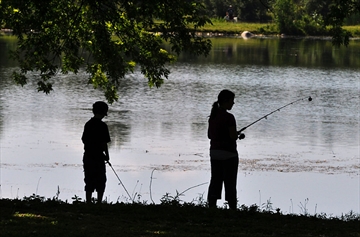 https://hooklineandsinker.ca/wp-content/uploads/2015/04/Guelph-Correctional-Ponds.jpg
237
360
HLSAdmin
https://hooklineandsinker.ca/wp-content/uploads/2014/12/Steelheading-in-the-Snow-900-80-Not-Faded-Actual-1030x91.jpg
HLSAdmin2015-04-27 22:13:052018-06-02 20:24:52Local – The Guelph Correctional Centre Ponds – The “OR”
https://hooklineandsinker.ca/wp-content/uploads/2015/04/Guelph-Correctional-Ponds.jpg
237
360
HLSAdmin
https://hooklineandsinker.ca/wp-content/uploads/2014/12/Steelheading-in-the-Snow-900-80-Not-Faded-Actual-1030x91.jpg
HLSAdmin2015-04-27 22:13:052018-06-02 20:24:52Local – The Guelph Correctional Centre Ponds – The “OR” https://hooklineandsinker.ca/wp-content/uploads/2015/03/Guelph-Lake-Conservation-Area-Arial.jpg
194
259
HLSAdmin
https://hooklineandsinker.ca/wp-content/uploads/2014/12/Steelheading-in-the-Snow-900-80-Not-Faded-Actual-1030x91.jpg
HLSAdmin2015-03-19 19:13:422021-06-18 20:52:10Local – The Guelph Lake Conservation Area
https://hooklineandsinker.ca/wp-content/uploads/2015/03/Guelph-Lake-Conservation-Area-Arial.jpg
194
259
HLSAdmin
https://hooklineandsinker.ca/wp-content/uploads/2014/12/Steelheading-in-the-Snow-900-80-Not-Faded-Actual-1030x91.jpg
HLSAdmin2015-03-19 19:13:422021-06-18 20:52:10Local – The Guelph Lake Conservation Area https://hooklineandsinker.ca/wp-content/uploads/2015/03/Island-Lake-Conservation-Area-Orangeville-Reservoir.jpg
192
262
HLSAdmin
https://hooklineandsinker.ca/wp-content/uploads/2014/12/Steelheading-in-the-Snow-900-80-Not-Faded-Actual-1030x91.jpg
HLSAdmin2015-03-22 21:55:182018-07-15 21:28:03Local – Island Lake Conservation Area – The Orangeville Reservoir
https://hooklineandsinker.ca/wp-content/uploads/2015/03/Island-Lake-Conservation-Area-Orangeville-Reservoir.jpg
192
262
HLSAdmin
https://hooklineandsinker.ca/wp-content/uploads/2014/12/Steelheading-in-the-Snow-900-80-Not-Faded-Actual-1030x91.jpg
HLSAdmin2015-03-22 21:55:182018-07-15 21:28:03Local – Island Lake Conservation Area – The Orangeville Reservoir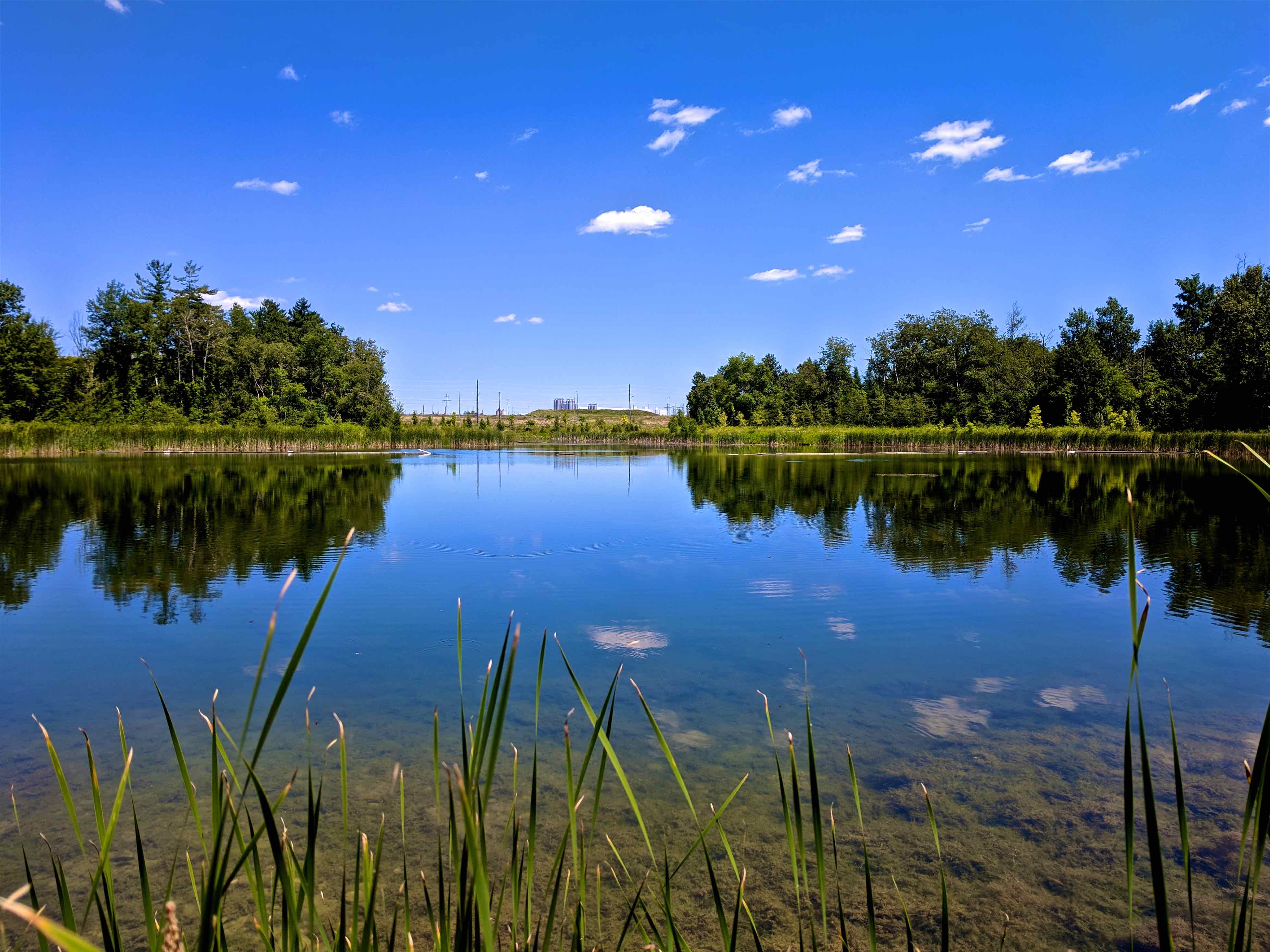 https://hooklineandsinker.ca/wp-content/uploads/2018/08/Laird-Road-Pond-AAA.jpg
2936
3915
HLSAdmin
https://hooklineandsinker.ca/wp-content/uploads/2014/12/Steelheading-in-the-Snow-900-80-Not-Faded-Actual-1030x91.jpg
HLSAdmin2018-08-20 22:04:022018-08-20 22:18:57Local – Laird Road Pond, Guelph Ontario
https://hooklineandsinker.ca/wp-content/uploads/2018/08/Laird-Road-Pond-AAA.jpg
2936
3915
HLSAdmin
https://hooklineandsinker.ca/wp-content/uploads/2014/12/Steelheading-in-the-Snow-900-80-Not-Faded-Actual-1030x91.jpg
HLSAdmin2018-08-20 22:04:022018-08-20 22:18:57Local – Laird Road Pond, Guelph Ontario https://hooklineandsinker.ca/wp-content/uploads/2015/05/Marden-Park-and-Community-Centre-and-Park-Guelph-Eramosa-Township-AA.jpg
1506
1456
HLSAdmin
https://hooklineandsinker.ca/wp-content/uploads/2014/12/Steelheading-in-the-Snow-900-80-Not-Faded-Actual-1030x91.jpg
HLSAdmin2015-05-07 23:25:032017-02-20 14:15:46Local – Marden Park Community Centre and Park – Guelph Eramosa Township
https://hooklineandsinker.ca/wp-content/uploads/2015/05/Marden-Park-and-Community-Centre-and-Park-Guelph-Eramosa-Township-AA.jpg
1506
1456
HLSAdmin
https://hooklineandsinker.ca/wp-content/uploads/2014/12/Steelheading-in-the-Snow-900-80-Not-Faded-Actual-1030x91.jpg
HLSAdmin2015-05-07 23:25:032017-02-20 14:15:46Local – Marden Park Community Centre and Park – Guelph Eramosa Township https://hooklineandsinker.ca/wp-content/uploads/2015/03/Mountsberg-Conservation-Area.jpg
142
356
HLSAdmin
https://hooklineandsinker.ca/wp-content/uploads/2014/12/Steelheading-in-the-Snow-900-80-Not-Faded-Actual-1030x91.jpg
HLSAdmin2015-03-22 21:29:472017-02-19 22:54:27Local – Mountsberg Conservation Area Reservoir
https://hooklineandsinker.ca/wp-content/uploads/2015/03/Mountsberg-Conservation-Area.jpg
142
356
HLSAdmin
https://hooklineandsinker.ca/wp-content/uploads/2014/12/Steelheading-in-the-Snow-900-80-Not-Faded-Actual-1030x91.jpg
HLSAdmin2015-03-22 21:29:472017-02-19 22:54:27Local – Mountsberg Conservation Area Reservoir https://hooklineandsinker.ca/wp-content/uploads/2017/06/Puslinch-Lake-images.jpg
183
275
HLSAdmin
https://hooklineandsinker.ca/wp-content/uploads/2014/12/Steelheading-in-the-Snow-900-80-Not-Faded-Actual-1030x91.jpg
HLSAdmin2017-06-17 21:21:552017-06-17 21:57:16Local – Puslinch Lake – Little & Big
https://hooklineandsinker.ca/wp-content/uploads/2017/06/Puslinch-Lake-images.jpg
183
275
HLSAdmin
https://hooklineandsinker.ca/wp-content/uploads/2014/12/Steelheading-in-the-Snow-900-80-Not-Faded-Actual-1030x91.jpg
HLSAdmin2017-06-17 21:21:552017-06-17 21:57:16Local – Puslinch Lake – Little & Big https://hooklineandsinker.ca/wp-content/uploads/2015/05/Robert-Edmondson-Conservation-Area-Sign-AA.jpg
833
1752
HLSAdmin
https://hooklineandsinker.ca/wp-content/uploads/2014/12/Steelheading-in-the-Snow-900-80-Not-Faded-Actual-1030x91.jpg
HLSAdmin2015-05-06 19:09:112017-06-25 20:34:05Local – Robert Edmondson Conservation Area (Formerly Burns Conservation Area)
https://hooklineandsinker.ca/wp-content/uploads/2015/05/Robert-Edmondson-Conservation-Area-Sign-AA.jpg
833
1752
HLSAdmin
https://hooklineandsinker.ca/wp-content/uploads/2014/12/Steelheading-in-the-Snow-900-80-Not-Faded-Actual-1030x91.jpg
HLSAdmin2015-05-06 19:09:112017-06-25 20:34:05Local – Robert Edmondson Conservation Area (Formerly Burns Conservation Area) https://hooklineandsinker.ca/wp-content/uploads/2015/03/Rockwood-Conservation-Area.jpg
183
275
HLSAdmin
https://hooklineandsinker.ca/wp-content/uploads/2014/12/Steelheading-in-the-Snow-900-80-Not-Faded-Actual-1030x91.jpg
HLSAdmin2015-03-22 17:40:452017-05-21 13:43:43Local – The Rockwood Conservation Area
https://hooklineandsinker.ca/wp-content/uploads/2015/03/Rockwood-Conservation-Area.jpg
183
275
HLSAdmin
https://hooklineandsinker.ca/wp-content/uploads/2014/12/Steelheading-in-the-Snow-900-80-Not-Faded-Actual-1030x91.jpg
HLSAdmin2015-03-22 17:40:452017-05-21 13:43:43Local – The Rockwood Conservation Area https://hooklineandsinker.ca/wp-content/uploads/2015/03/Shades-Mills-Conservation-Area.jpg
197
256
HLSAdmin
https://hooklineandsinker.ca/wp-content/uploads/2014/12/Steelheading-in-the-Snow-900-80-Not-Faded-Actual-1030x91.jpg
HLSAdmin2015-03-22 17:58:562021-01-24 21:14:46Local – Shade’s Mills Conservation Area & Mill Creek
https://hooklineandsinker.ca/wp-content/uploads/2015/03/Shades-Mills-Conservation-Area.jpg
197
256
HLSAdmin
https://hooklineandsinker.ca/wp-content/uploads/2014/12/Steelheading-in-the-Snow-900-80-Not-Faded-Actual-1030x91.jpg
HLSAdmin2015-03-22 17:58:562021-01-24 21:14:46Local – Shade’s Mills Conservation Area & Mill Creek https://hooklineandsinker.ca/wp-content/uploads/2015/03/Carp-Speed-River-Confluence-Eramosa-Covered-BridgeSV100516_01.jpg
360
480
HLSAdmin
https://hooklineandsinker.ca/wp-content/uploads/2014/12/Steelheading-in-the-Snow-900-80-Not-Faded-Actual-1030x91.jpg
HLSAdmin2015-03-17 21:22:322017-02-25 22:16:03Local – The Speed & Eramosa Rivers
https://hooklineandsinker.ca/wp-content/uploads/2015/03/Carp-Speed-River-Confluence-Eramosa-Covered-BridgeSV100516_01.jpg
360
480
HLSAdmin
https://hooklineandsinker.ca/wp-content/uploads/2014/12/Steelheading-in-the-Snow-900-80-Not-Faded-Actual-1030x91.jpg
HLSAdmin2015-03-17 21:22:322017-02-25 22:16:03Local – The Speed & Eramosa Rivers https://hooklineandsinker.ca/wp-content/uploads/2015/03/Speed-River-C.jpg
681
1024
HLSAdmin
https://hooklineandsinker.ca/wp-content/uploads/2014/12/Steelheading-in-the-Snow-900-80-Not-Faded-Actual-1030x91.jpg
HLSAdmin2015-02-23 21:30:362017-02-19 23:13:03Local – The Speed River
https://hooklineandsinker.ca/wp-content/uploads/2015/03/Speed-River-C.jpg
681
1024
HLSAdmin
https://hooklineandsinker.ca/wp-content/uploads/2014/12/Steelheading-in-the-Snow-900-80-Not-Faded-Actual-1030x91.jpg
HLSAdmin2015-02-23 21:30:362017-02-19 23:13:03Local – The Speed River https://hooklineandsinker.ca/wp-content/uploads/2015/03/Valens-Lake-Conservation-Area.jpg
160
240
HLSAdmin
https://hooklineandsinker.ca/wp-content/uploads/2014/12/Steelheading-in-the-Snow-900-80-Not-Faded-Actual-1030x91.jpg
HLSAdmin2015-03-22 21:17:252020-02-26 23:14:16Local – Valens Lake Conservation Area
https://hooklineandsinker.ca/wp-content/uploads/2015/03/Valens-Lake-Conservation-Area.jpg
160
240
HLSAdmin
https://hooklineandsinker.ca/wp-content/uploads/2014/12/Steelheading-in-the-Snow-900-80-Not-Faded-Actual-1030x91.jpg
HLSAdmin2015-03-22 21:17:252020-02-26 23:14:16Local – Valens Lake Conservation Area https://hooklineandsinker.ca/wp-content/uploads/2015/03/Below-Whitemans.jpg
396
595
HLSAdmin
https://hooklineandsinker.ca/wp-content/uploads/2014/12/Steelheading-in-the-Snow-900-80-Not-Faded-Actual-1030x91.jpg
HLSAdmin2015-03-22 18:11:352018-02-10 14:43:19Local – Whiteman’s Creek
https://hooklineandsinker.ca/wp-content/uploads/2015/03/Below-Whitemans.jpg
396
595
HLSAdmin
https://hooklineandsinker.ca/wp-content/uploads/2014/12/Steelheading-in-the-Snow-900-80-Not-Faded-Actual-1030x91.jpg
HLSAdmin2015-03-22 18:11:352018-02-10 14:43:19Local – Whiteman’s Creek https://hooklineandsinker.ca/wp-content/uploads/2015/10/The-Beaver-River-Thornbury-River-Mouth-B.jpg
768
1024
HLSAdmin
https://hooklineandsinker.ca/wp-content/uploads/2014/12/Steelheading-in-the-Snow-900-80-Not-Faded-Actual-1030x91.jpg
HLSAdmin2015-10-04 21:07:462018-10-02 12:22:23Migratory – The Beaver River – Thornbury, Ontario
https://hooklineandsinker.ca/wp-content/uploads/2015/10/The-Beaver-River-Thornbury-River-Mouth-B.jpg
768
1024
HLSAdmin
https://hooklineandsinker.ca/wp-content/uploads/2014/12/Steelheading-in-the-Snow-900-80-Not-Faded-Actual-1030x91.jpg
HLSAdmin2015-10-04 21:07:462018-10-02 12:22:23Migratory – The Beaver River – Thornbury, Ontario https://hooklineandsinker.ca/wp-content/uploads/2015/10/The-Bighead-River-in-Meaford-Updtream-from-The-Legion-Hole-Fall-AA.jpg
1530
2048
HLSAdmin
https://hooklineandsinker.ca/wp-content/uploads/2014/12/Steelheading-in-the-Snow-900-80-Not-Faded-Actual-1030x91.jpg
HLSAdmin2015-10-05 20:14:252020-12-29 15:35:01Migratory – The Bighead River – Meaford, Ontario
https://hooklineandsinker.ca/wp-content/uploads/2015/10/The-Bighead-River-in-Meaford-Updtream-from-The-Legion-Hole-Fall-AA.jpg
1530
2048
HLSAdmin
https://hooklineandsinker.ca/wp-content/uploads/2014/12/Steelheading-in-the-Snow-900-80-Not-Faded-Actual-1030x91.jpg
HLSAdmin2015-10-05 20:14:252020-12-29 15:35:01Migratory – The Bighead River – Meaford, Ontario https://hooklineandsinker.ca/wp-content/uploads/2015/10/The-Bronte-Creek-or-12-Mile-Creek-Steelheading-Upper-Middle-Road-BBB.jpg
2332
2448
HLSAdmin
https://hooklineandsinker.ca/wp-content/uploads/2014/12/Steelheading-in-the-Snow-900-80-Not-Faded-Actual-1030x91.jpg
HLSAdmin2015-10-05 21:16:082018-11-07 18:07:46Migratory – Bronte Creek or 12 Mile Creek – Oakville, Ontario
https://hooklineandsinker.ca/wp-content/uploads/2015/10/The-Bronte-Creek-or-12-Mile-Creek-Steelheading-Upper-Middle-Road-BBB.jpg
2332
2448
HLSAdmin
https://hooklineandsinker.ca/wp-content/uploads/2014/12/Steelheading-in-the-Snow-900-80-Not-Faded-Actual-1030x91.jpg
HLSAdmin2015-10-05 21:16:082018-11-07 18:07:46Migratory – Bronte Creek or 12 Mile Creek – Oakville, Ontario https://hooklineandsinker.ca/wp-content/uploads/2015/03/Credit-River-at-Erindale-Park-above-Dundas-April-24th-at-9am.jpg
306
544
HLSAdmin
https://hooklineandsinker.ca/wp-content/uploads/2014/12/Steelheading-in-the-Snow-900-80-Not-Faded-Actual-1030x91.jpg
HLSAdmin2015-03-22 19:16:222019-08-27 15:23:00Migratory – The Credit River – Lower
https://hooklineandsinker.ca/wp-content/uploads/2015/03/Credit-River-at-Erindale-Park-above-Dundas-April-24th-at-9am.jpg
306
544
HLSAdmin
https://hooklineandsinker.ca/wp-content/uploads/2014/12/Steelheading-in-the-Snow-900-80-Not-Faded-Actual-1030x91.jpg
HLSAdmin2015-03-22 19:16:222019-08-27 15:23:00Migratory – The Credit River – Lower https://hooklineandsinker.ca/wp-content/uploads/2020/12/Salmon-fishing-The-Humber-River-The-Old-Mill-Dam-C-scaled.jpg
2560
1920
HLSAdmin
https://hooklineandsinker.ca/wp-content/uploads/2014/12/Steelheading-in-the-Snow-900-80-Not-Faded-Actual-1030x91.jpg
HLSAdmin2020-12-29 15:47:582020-12-29 15:47:58Migratory – The Humber River – Toronto, Ontario
https://hooklineandsinker.ca/wp-content/uploads/2020/12/Salmon-fishing-The-Humber-River-The-Old-Mill-Dam-C-scaled.jpg
2560
1920
HLSAdmin
https://hooklineandsinker.ca/wp-content/uploads/2014/12/Steelheading-in-the-Snow-900-80-Not-Faded-Actual-1030x91.jpg
HLSAdmin2020-12-29 15:47:582020-12-29 15:47:58Migratory – The Humber River – Toronto, Ontario https://hooklineandsinker.ca/wp-content/uploads/2018/08/Ganaraska-River-Fishing-August-2018KKK.jpg
4018
3014
HLSAdmin
https://hooklineandsinker.ca/wp-content/uploads/2014/12/Steelheading-in-the-Snow-900-80-Not-Faded-Actual-1030x91.jpg
HLSAdmin2018-08-05 21:32:292019-08-27 18:07:22Migratory – The Ganaraska River or The “Ganny” – Port Hope, Ontario
https://hooklineandsinker.ca/wp-content/uploads/2018/08/Ganaraska-River-Fishing-August-2018KKK.jpg
4018
3014
HLSAdmin
https://hooklineandsinker.ca/wp-content/uploads/2014/12/Steelheading-in-the-Snow-900-80-Not-Faded-Actual-1030x91.jpg
HLSAdmin2018-08-05 21:32:292019-08-27 18:07:22Migratory – The Ganaraska River or The “Ganny” – Port Hope, Ontario https://hooklineandsinker.ca/wp-content/uploads/2015/03/The-Lower-Grand-River-Below-Caledonia-Dam-HH.jpg
960
1280
HLSAdmin
https://hooklineandsinker.ca/wp-content/uploads/2014/12/Steelheading-in-the-Snow-900-80-Not-Faded-Actual-1030x91.jpg
HLSAdmin2015-03-14 19:56:022017-02-20 13:37:53Migratory – The Grand River – The Middle & Lower
https://hooklineandsinker.ca/wp-content/uploads/2015/03/The-Lower-Grand-River-Below-Caledonia-Dam-HH.jpg
960
1280
HLSAdmin
https://hooklineandsinker.ca/wp-content/uploads/2014/12/Steelheading-in-the-Snow-900-80-Not-Faded-Actual-1030x91.jpg
HLSAdmin2015-03-14 19:56:022017-02-20 13:37:53Migratory – The Grand River – The Middle & Lower https://hooklineandsinker.ca/wp-content/uploads/2017/11/The-Nine-Mile-River-Port-Albert-Ontario-EEE.jpg
2988
5312
HLSAdmin
https://hooklineandsinker.ca/wp-content/uploads/2014/12/Steelheading-in-the-Snow-900-80-Not-Faded-Actual-1030x91.jpg
HLSAdmin2017-11-04 18:57:162018-08-05 22:27:39Migratory – The Nine Mile River – Port Albert, Ontario
https://hooklineandsinker.ca/wp-content/uploads/2017/11/The-Nine-Mile-River-Port-Albert-Ontario-EEE.jpg
2988
5312
HLSAdmin
https://hooklineandsinker.ca/wp-content/uploads/2014/12/Steelheading-in-the-Snow-900-80-Not-Faded-Actual-1030x91.jpg
HLSAdmin2017-11-04 18:57:162018-08-05 22:27:39Migratory – The Nine Mile River – Port Albert, Ontario https://hooklineandsinker.ca/wp-content/uploads/2015/03/The-Maitland-River.jpg
194
259
HLSAdmin
https://hooklineandsinker.ca/wp-content/uploads/2014/12/Steelheading-in-the-Snow-900-80-Not-Faded-Actual-1030x91.jpg
HLSAdmin2015-03-22 18:36:422018-11-10 23:45:52Migratory – The Maitland River – Goderich, Ontario
https://hooklineandsinker.ca/wp-content/uploads/2015/03/The-Maitland-River.jpg
194
259
HLSAdmin
https://hooklineandsinker.ca/wp-content/uploads/2014/12/Steelheading-in-the-Snow-900-80-Not-Faded-Actual-1030x91.jpg
HLSAdmin2015-03-22 18:36:422018-11-10 23:45:52Migratory – The Maitland River – Goderich, Ontario https://hooklineandsinker.ca/wp-content/uploads/2015/10/The-Niagara-River-The-Glenn-BBBB.jpg
1836
3264
HLSAdmin
https://hooklineandsinker.ca/wp-content/uploads/2014/12/Steelheading-in-the-Snow-900-80-Not-Faded-Actual-1030x91.jpg
HLSAdmin2015-10-05 22:49:102017-10-23 21:17:22Migratory – The Niagara River – Niagara Falls, Ontario
https://hooklineandsinker.ca/wp-content/uploads/2015/10/The-Niagara-River-The-Glenn-BBBB.jpg
1836
3264
HLSAdmin
https://hooklineandsinker.ca/wp-content/uploads/2014/12/Steelheading-in-the-Snow-900-80-Not-Faded-Actual-1030x91.jpg
HLSAdmin2015-10-05 22:49:102017-10-23 21:17:22Migratory – The Niagara River – Niagara Falls, Ontario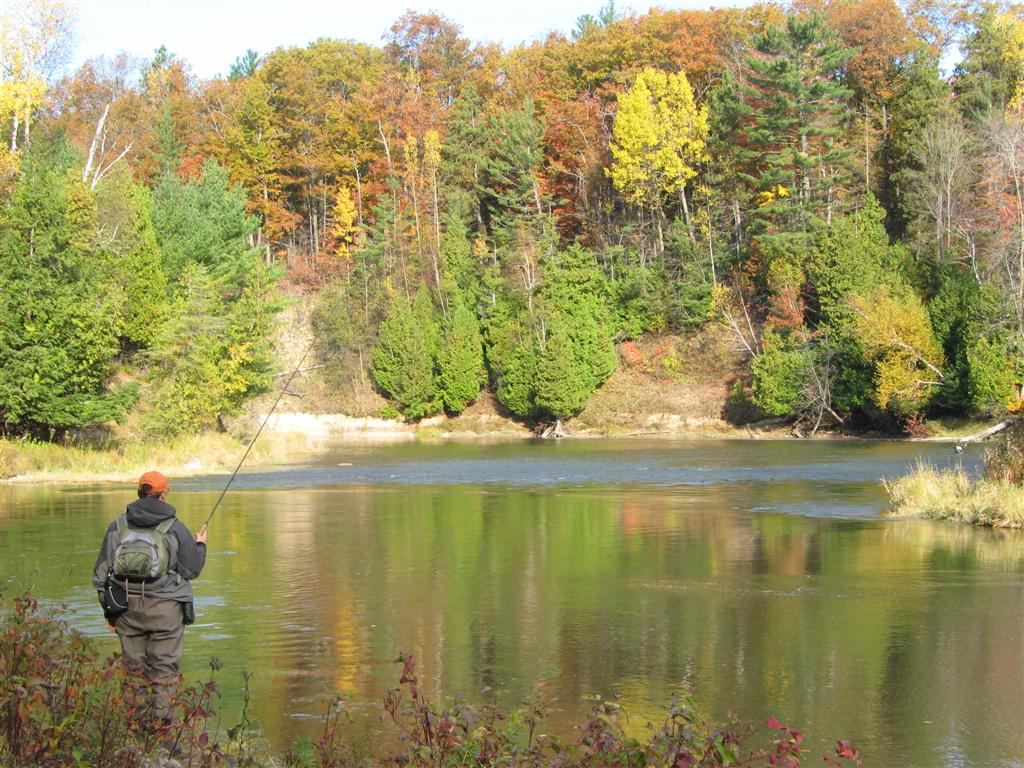 https://hooklineandsinker.ca/wp-content/uploads/2015/10/The-Nottawaga-River.jpg
768
1024
HLSAdmin
https://hooklineandsinker.ca/wp-content/uploads/2014/12/Steelheading-in-the-Snow-900-80-Not-Faded-Actual-1030x91.jpg
HLSAdmin2015-10-11 22:32:582017-02-20 13:52:51Migratory – The Nottawasaga River or “Notty” – Wasaga Beach, Ontario
https://hooklineandsinker.ca/wp-content/uploads/2015/10/The-Nottawaga-River.jpg
768
1024
HLSAdmin
https://hooklineandsinker.ca/wp-content/uploads/2014/12/Steelheading-in-the-Snow-900-80-Not-Faded-Actual-1030x91.jpg
HLSAdmin2015-10-11 22:32:582017-02-20 13:52:51Migratory – The Nottawasaga River or “Notty” – Wasaga Beach, Ontario https://hooklineandsinker.ca/wp-content/uploads/2019/05/Oxenden-Creek-Wiarton-Ontario-AAA.jpg
1280
960
HLSAdmin
https://hooklineandsinker.ca/wp-content/uploads/2014/12/Steelheading-in-the-Snow-900-80-Not-Faded-Actual-1030x91.jpg
HLSAdmin2019-05-12 22:24:452021-10-10 16:15:39Migratory – Oxenden Creek, Wiarton Ontario
https://hooklineandsinker.ca/wp-content/uploads/2019/05/Oxenden-Creek-Wiarton-Ontario-AAA.jpg
1280
960
HLSAdmin
https://hooklineandsinker.ca/wp-content/uploads/2014/12/Steelheading-in-the-Snow-900-80-Not-Faded-Actual-1030x91.jpg
HLSAdmin2019-05-12 22:24:452021-10-10 16:15:39Migratory – Oxenden Creek, Wiarton Ontario https://hooklineandsinker.ca/wp-content/uploads/2021/10/Port-Dalhousie-St-Catharines-Ontario-C.jpg
709
945
HLSAdmin
https://hooklineandsinker.ca/wp-content/uploads/2014/12/Steelheading-in-the-Snow-900-80-Not-Faded-Actual-1030x91.jpg
HLSAdmin2021-10-10 16:13:412021-10-10 17:01:36Migratory – Port Dalhousie – St. Catharines, Ontario
https://hooklineandsinker.ca/wp-content/uploads/2021/10/Port-Dalhousie-St-Catharines-Ontario-C.jpg
709
945
HLSAdmin
https://hooklineandsinker.ca/wp-content/uploads/2014/12/Steelheading-in-the-Snow-900-80-Not-Faded-Actual-1030x91.jpg
HLSAdmin2021-10-10 16:13:412021-10-10 17:01:36Migratory – Port Dalhousie – St. Catharines, Ontario https://hooklineandsinker.ca/wp-content/uploads/2015/10/The-Sauble-River-at-Sauble-Falls-BB.jpg
2448
3264
HLSAdmin
https://hooklineandsinker.ca/wp-content/uploads/2014/12/Steelheading-in-the-Snow-900-80-Not-Faded-Actual-1030x91.jpg
HLSAdmin2015-10-10 21:56:272018-05-02 21:29:06Migratory – The Sauble River – Sauble Falls, Ontario
https://hooklineandsinker.ca/wp-content/uploads/2015/10/The-Sauble-River-at-Sauble-Falls-BB.jpg
2448
3264
HLSAdmin
https://hooklineandsinker.ca/wp-content/uploads/2014/12/Steelheading-in-the-Snow-900-80-Not-Faded-Actual-1030x91.jpg
HLSAdmin2015-10-10 21:56:272018-05-02 21:29:06Migratory – The Sauble River – Sauble Falls, Ontario https://hooklineandsinker.ca/wp-content/uploads/2015/03/The-Sugeen-River-Dennys-Dam-A.jpg
1196
1600
HLSAdmin
https://hooklineandsinker.ca/wp-content/uploads/2014/12/Steelheading-in-the-Snow-900-80-Not-Faded-Actual-1030x91.jpg
HLSAdmin2015-03-14 20:48:382018-08-05 21:39:52Migratory – The Saugeen River or The “Geen” – Southampton, Ontario
https://hooklineandsinker.ca/wp-content/uploads/2015/03/The-Sugeen-River-Dennys-Dam-A.jpg
1196
1600
HLSAdmin
https://hooklineandsinker.ca/wp-content/uploads/2014/12/Steelheading-in-the-Snow-900-80-Not-Faded-Actual-1030x91.jpg
HLSAdmin2015-03-14 20:48:382018-08-05 21:39:52Migratory – The Saugeen River or The “Geen” – Southampton, Ontario https://hooklineandsinker.ca/wp-content/uploads/2018/11/16-Mile-Creek-Oakville-QEW-to-Glen-Abbey-CCC.jpg
5312
2988
HLSAdmin
https://hooklineandsinker.ca/wp-content/uploads/2014/12/Steelheading-in-the-Snow-900-80-Not-Faded-Actual-1030x91.jpg
HLSAdmin2018-11-07 17:45:422019-10-14 17:23:58Migratory – Sixteen Mile Creek – Oakville, Ontario
https://hooklineandsinker.ca/wp-content/uploads/2018/11/16-Mile-Creek-Oakville-QEW-to-Glen-Abbey-CCC.jpg
5312
2988
HLSAdmin
https://hooklineandsinker.ca/wp-content/uploads/2014/12/Steelheading-in-the-Snow-900-80-Not-Faded-Actual-1030x91.jpg
HLSAdmin2018-11-07 17:45:422019-10-14 17:23:58Migratory – Sixteen Mile Creek – Oakville, Ontario https://hooklineandsinker.ca/wp-content/uploads/2019/05/Float-Centerpin-Fishing-The-St-Marys-River-Sault-Saint-Marie-Ontario-DDD.jpg
3004
3211
HLSAdmin
https://hooklineandsinker.ca/wp-content/uploads/2014/12/Steelheading-in-the-Snow-900-80-Not-Faded-Actual-1030x91.jpg
HLSAdmin2019-05-19 21:42:512019-05-19 22:12:31Migratory – The St. Marys River in Sault Ste. Marie, Ontario
https://hooklineandsinker.ca/wp-content/uploads/2019/05/Float-Centerpin-Fishing-The-St-Marys-River-Sault-Saint-Marie-Ontario-DDD.jpg
3004
3211
HLSAdmin
https://hooklineandsinker.ca/wp-content/uploads/2014/12/Steelheading-in-the-Snow-900-80-Not-Faded-Actual-1030x91.jpg
HLSAdmin2019-05-19 21:42:512019-05-19 22:12:31Migratory – The St. Marys River in Sault Ste. Marie, Ontario https://hooklineandsinker.ca/wp-content/uploads/2018/05/Owen-Sound-Sydenham-River-AA.jpg
560
996
HLSAdmin
https://hooklineandsinker.ca/wp-content/uploads/2014/12/Steelheading-in-the-Snow-900-80-Not-Faded-Actual-1030x91.jpg
HLSAdmin2018-05-02 20:56:122018-05-02 21:32:31Migratory – The Sydenham River – Owen Sound, Ontario
https://hooklineandsinker.ca/wp-content/uploads/2018/05/Owen-Sound-Sydenham-River-AA.jpg
560
996
HLSAdmin
https://hooklineandsinker.ca/wp-content/uploads/2014/12/Steelheading-in-the-Snow-900-80-Not-Faded-Actual-1030x91.jpg
HLSAdmin2018-05-02 20:56:122018-05-02 21:32:31Migratory – The Sydenham River – Owen Sound, Ontario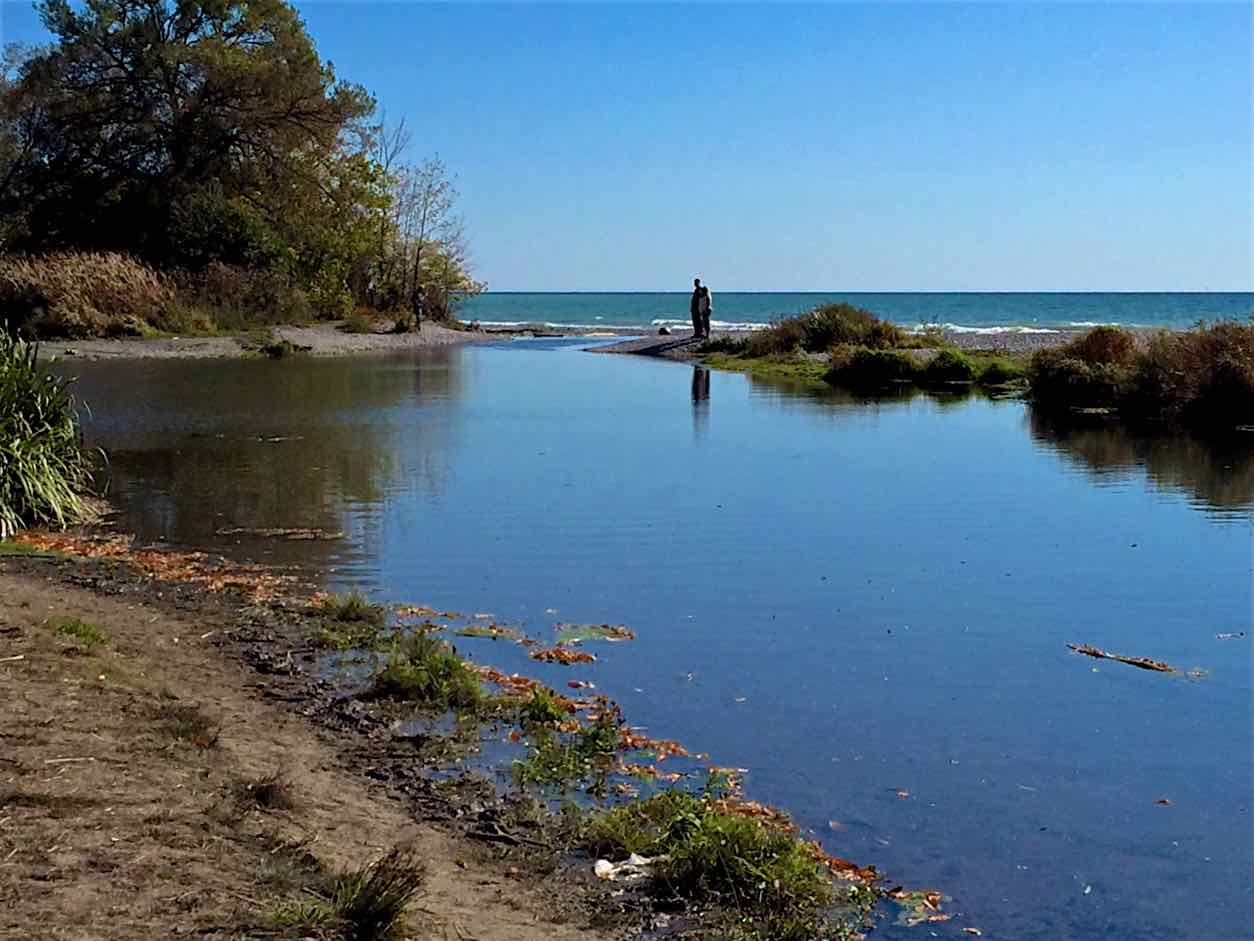 https://hooklineandsinker.ca/wp-content/uploads/2018/08/Wilmot-Creek-October-11th-2016-AAA.jpg
941
1254
HLSAdmin
https://hooklineandsinker.ca/wp-content/uploads/2014/12/Steelheading-in-the-Snow-900-80-Not-Faded-Actual-1030x91.jpg
HLSAdmin2018-08-06 15:49:322018-08-06 16:05:13Migratory – Wilmot Creek – Newcastle, Ontario
https://hooklineandsinker.ca/wp-content/uploads/2018/08/Wilmot-Creek-October-11th-2016-AAA.jpg
941
1254
HLSAdmin
https://hooklineandsinker.ca/wp-content/uploads/2014/12/Steelheading-in-the-Snow-900-80-Not-Faded-Actual-1030x91.jpg
HLSAdmin2018-08-06 15:49:322018-08-06 16:05:13Migratory – Wilmot Creek – Newcastle, OntarioWe are the leading provider of Fly Fishing Lessons, Corporate Team Building, and Guiding on the Upper Grand River, the Upper Credit River, and the Conestogo River.
No Guelph, Fergus, Kitchener or Cambridge Fishing Tackle Retailer will boast as complete and diverse a store inventory, including a vast selection of Centerpin / Float Fishing Reels, Rods, Clothing and Accessories.
Order a HLS or TFC Gift Card – We will put one in the mail for FREE!
Fly Shop Flyshop Flyfish Grand River Fly fish Grand River Guide Grand River Lesson Grand River Fergus Ontario Canada






